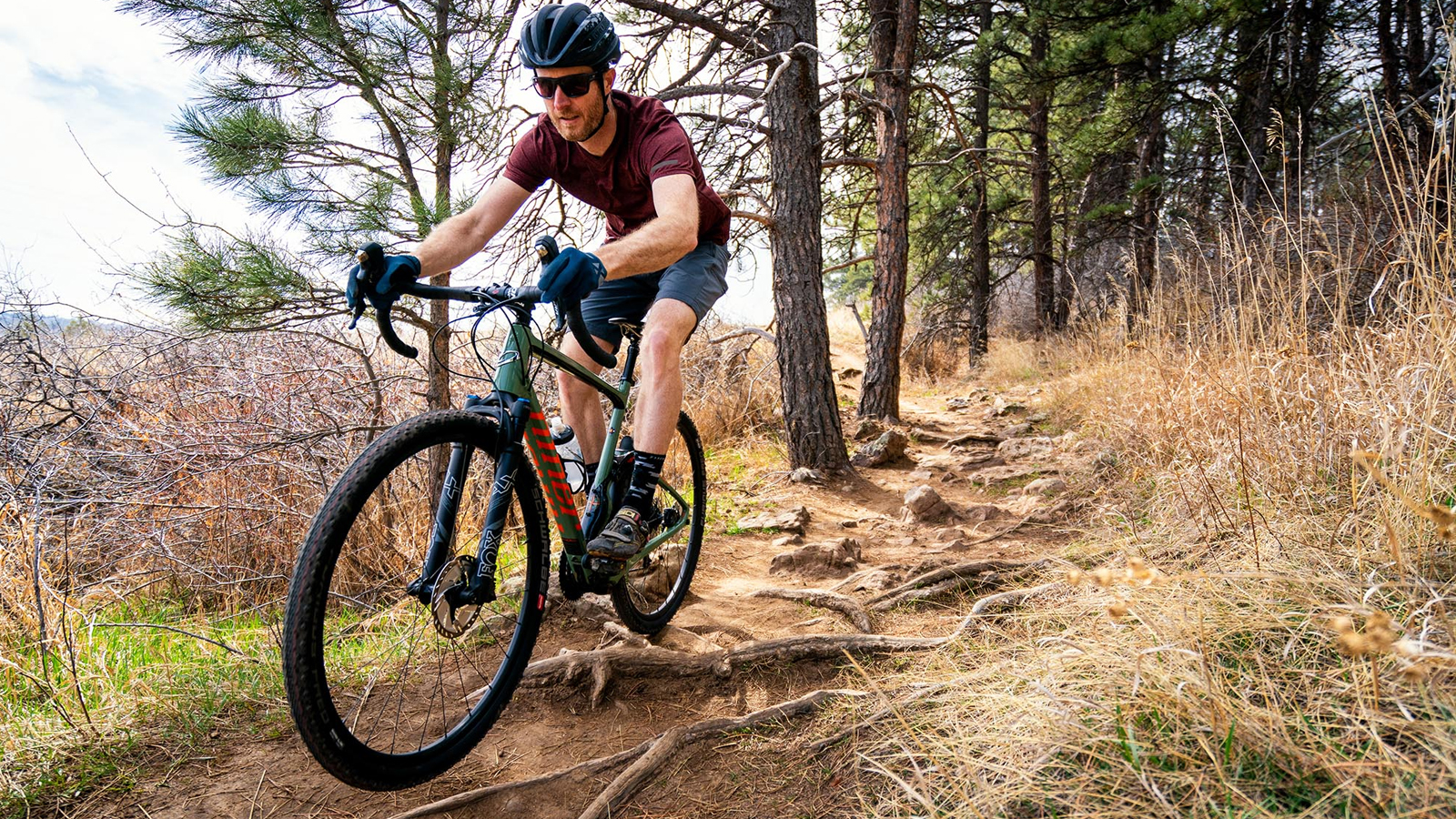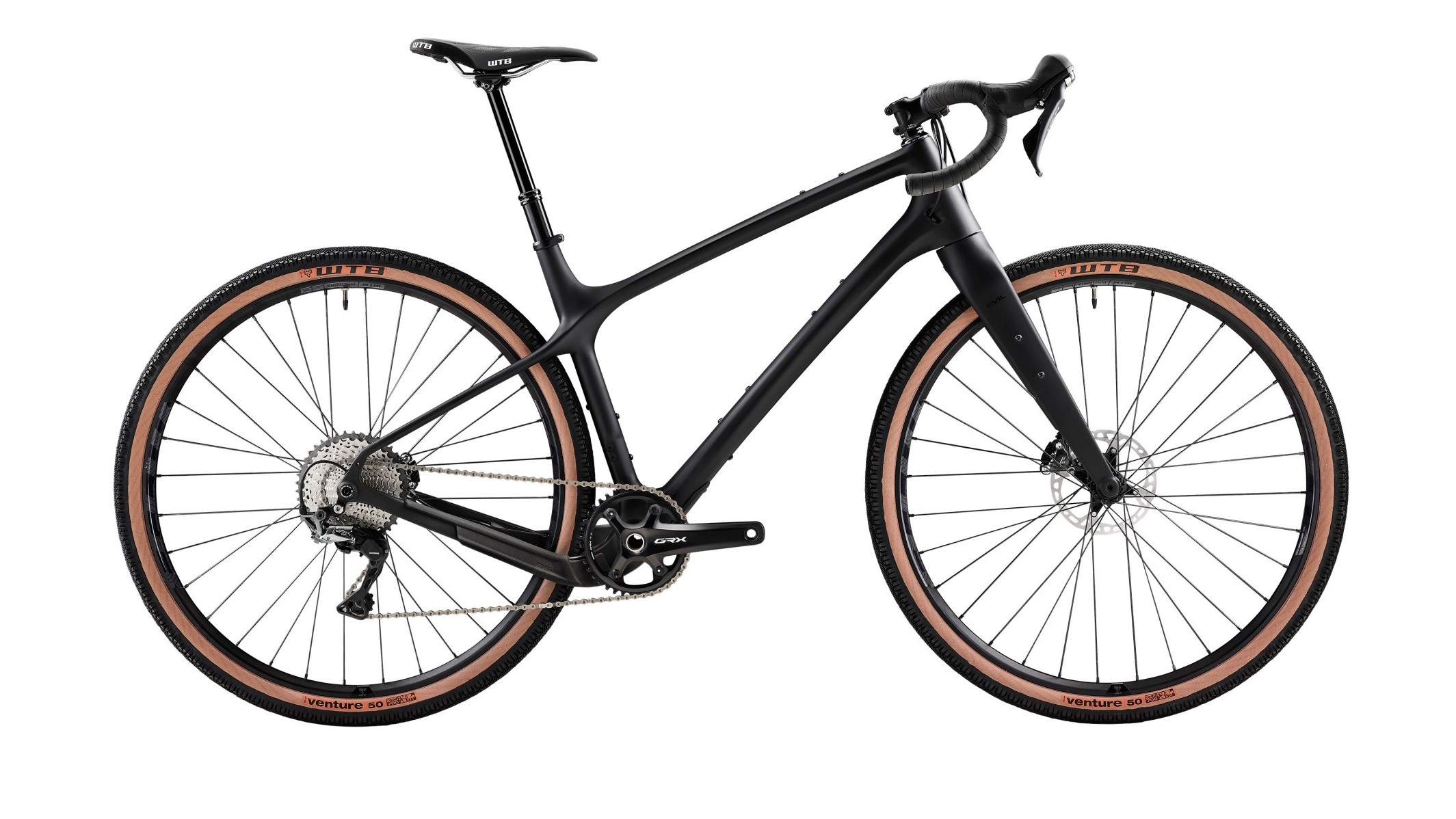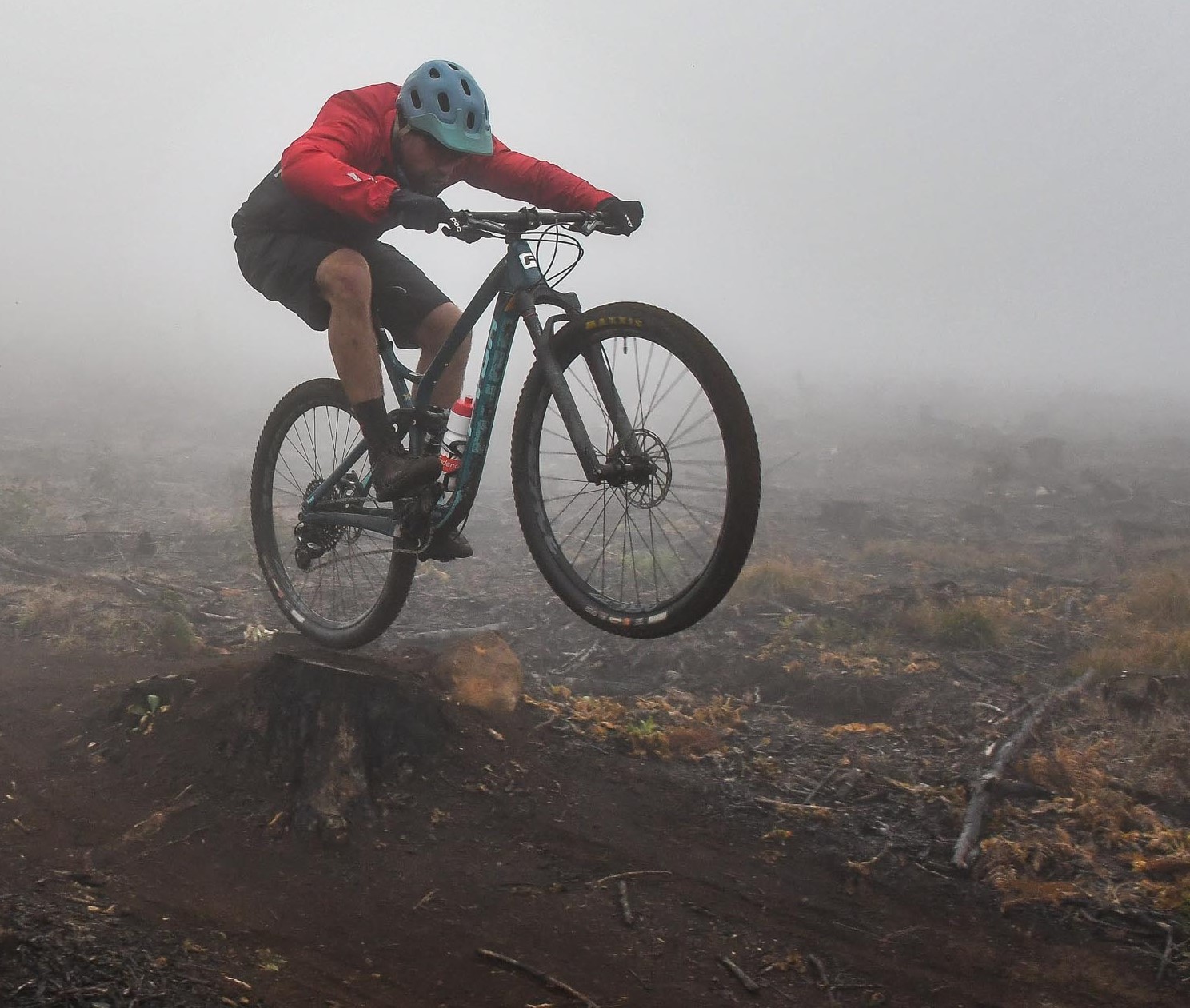When does a gravel bike become a mountain bike?
Technology migration is blurring the distinction between modern gravel bikes and short-travel mountain bikes

The distinctions between mountain and gravel bikes were always quite simple to explain and understand.
If it had drop bars, tyres under 2-inches in width and no suspension, it was a gravel bike. Anything with riser bars, moderately sized tyres and a suspension fork or rear shock linkage, qualified as a mountain bike.
Those comfortable distinctions are now being challenged, as designers borrow more mountain bike technologies and repurpose them for gravel bike use.
We have seen gravel bikes with front suspension forks before, most notably Cannondale’s Slate, which launched in 2015. The difference in 2020, is a corresponding trend towards rear axle compliance too. Dropper seatposts? You can certainly have those on your new gravel bike, with internal routing and neatly integrated with your redundant 1x left-hand shifter.
It is incredible to think that XC racing bikes only started incorporating dropper seatposts very recently and yet they are now an option on gravel bikes, too.
Handlebar shape and width has remained an aspect of distinction for most when discussing mountain and gravel bikes. The latter have drop bars, much narrower than anything encountered on a mountain bike. That might have been true two or three years ago, but it is certainly no longer the case.
Wide bars and everything else
A flood of new ultra-wide drop bars is enabling very progressive steering geometries for gravel bikes. Ridefarr's Wide-R is an example of this, offering an option that is 750mm wide at the drops. If we contrast that with the trend of handlebar width evolution in mountain biking, it took more than a decade for XC riders to accept the relevance of handlebars beyond 700mm. Gravel bikes have become early adopters of the ‘wider-is-better’ steering logic.
No gravel bike exemplifies the confusion to mountain biker, quite like Niner’s MCR 9 RDO. The American company reiterates that its MCR 9 RDO is not a mountain bike. This is true gravel bike, with plush short-travel suspension.
Unlike Cannondale’s new Topstone gravel bike range, the MCR 9 RDO has a proper air shock and separate rear triangle, with sophisticated suspension links. Cannondale uses flex stay technology on its dual-suspension gravel bike to deliver 30mm of travel, whilst Niner’s MCR 9 RDO offers 50mm of air-shock managed terrain absorption.
The Cannondale Topstone lacks adjustable compression or rebound function on its rear suspension. In contrast, Niner’s MCR 9 RDO features an adaptable air shock. Its front fork is sourced from Fox and although it had only 40mm of travel, it features 32mm stanchions and a 15mm through axle, just like you would find on a lightweight Stepcast XC fork.

Daring geometry
In terms of suspension technology, the MCR 9 RDO is every bit a mountain bike, but for its steep geometry (tallying a 71-degree head angle) and drop bars. Perhaps the most bizarre thought experiment is that if you combined the suspension technology of Niner’s MCR 9 RDO gravel bike with the daring geometry of Evil’s Chamois Hager, you could have a potential race-winning XCM set-up.
Mountain bikes have settled into a stable hierarchy of segmentation, allowing designers in the gravel bike realm a huge margin of experimentation. This is akin to what was experienced in the original dual-suspension mountain bike technology surge, during the late 1990s.
Not all these novel gravel bike ideas will prove sustainable. Some will prove to be hapless compromises. But the marketability of a mountain bike with less than 100mm of fork or rear shock travel, is disappearing.
Even the most ardent XC racing frames are now longer and slacker, capable of running 100-120mm suspension forks and dropper seatposts. The market for mountain bikes under 100mm of suspension capability is being eroded and replaced with daringly experimental suspension gravel bikes.
Should we apply a value judgment on this trend? Are product planners innovating for the sake of confusing customers and triggering demand? I do not think so.
Mountain bike design, even in the XC segment, is responding to changes in rider behaviour. More specifically: terrain. As XC riders are venturing onto more challenging trails, they are discovering that slightly more suspension capability and slacker geometry, is not a significant debit to climbing performance. This is driving the development trend for more progressive XC frames.
By the same truth, gravel bike riders are also uncovering the benefit of some suspension function, on 100-mile all-terrain rides. Although progressive gravel bikes might have similar steering geometries to XC mountain bikes of 2015, they very much serve a purpose all of their own.

Lance Branquinho is a Namibian-born journalist who graduated to mountain biking after injuries curtailed his trail running. He has a weakness for British steel hardtails, especially those which only run a single gear. As well as Bike Perfect, Lance has written for MBR.com, Off-Road.cc and Cycling News.
